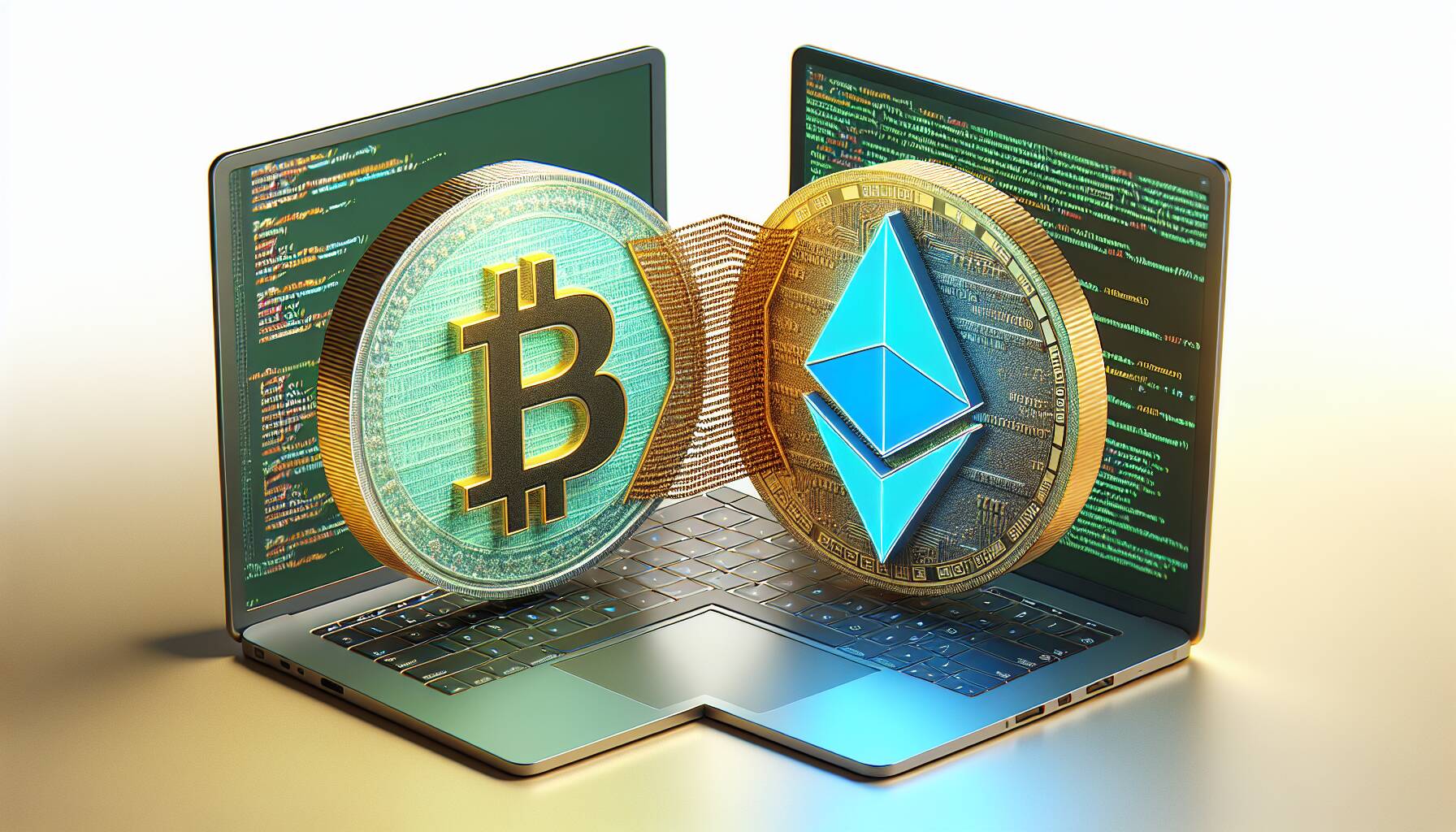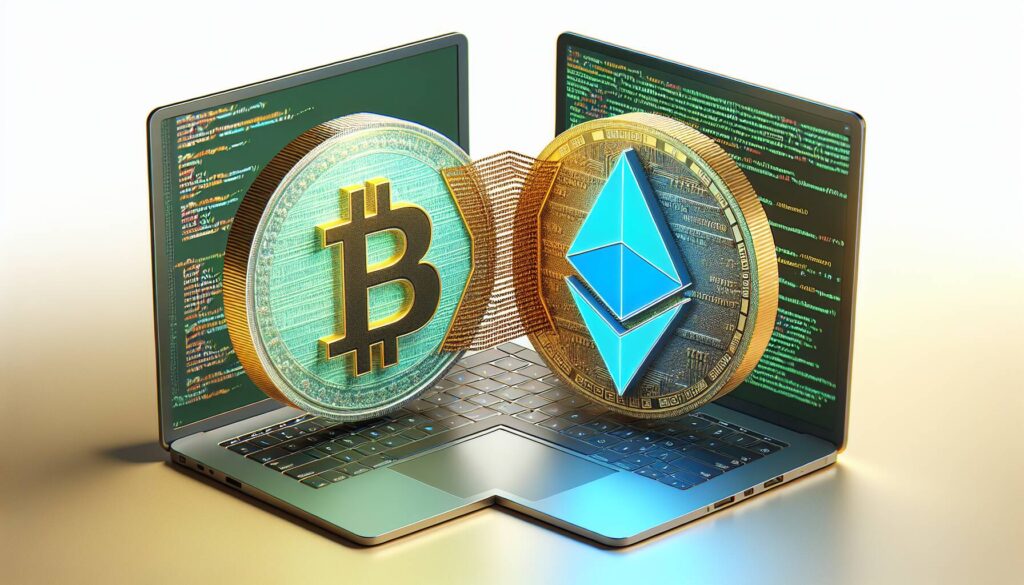In a significant advancement for the cryptocurrency landscape, the Bitcoin token protocol BRC20 has integrated the Ethereum Virtual Machine (EVM) into its framework, enabling Ethereum-style smart contracts on the Bitcoin blockchain. This notable upgrade, announced by the developers at Ordinals, was implemented at Bitcoin block 912,690 and marks a pivotal moment in merging two of the most prominent technologies in the crypto sphere.
BRC20 serves as a token standard to issue fungible tokens on Bitcoin through the Ordinals protocol, which allows for data inscription on individual satoshis—the smallest units of Bitcoin. By incorporating the EVM, BRC20 not only enriches its core functionality but also introduces programmability similar to what Ethereum users have enjoyed, eliminating the need for centralized governance.
“The holy grail is combining the two gold standards: Bitcoin as the most decentralized and secure network, and the EVM as the most proven virtual machine,” remarked Domo, the pseudonymous creator of BRC20.
This upgrade, referred to as BRC2.0, was executed by Ordinals’ developer Best in Slot in collaboration with Domo. As explained by Best in Slot CEO Eril Binari Ezerel, the enhanced capability transforms the current ‘calculator-style’ indexers into a Turing complete system, expanding the potential uses for Bitcoin beyond traditional transactions.
The evolution of the Ordinals protocol, which began at the start of 2023, has been crucial in fostering greater utility on the Bitcoin network, bringing smart contract capabilities akin to those found on platforms like Ethereum. The combination of Bitcoin’s robustness and EVM’s programmability aims to provide users a unique blend of security and flexibility, propelling the Bitcoin ecosystem into a new era of decentralized finance and innovation.

Bitcoin’s BRC20 Protocol and EVM Integration
Key points regarding the integration of Ethereum-style smart contracts into Bitcoin’s BRC20 protocol:
- BRC20 Token Standard: A new standard for issuing fungible tokens on the Bitcoin blockchain using the Ordinals protocol.
- Integration of EVM: The Ethereum Virtual Machine is now integrated into BRC20’s core logic, enhancing Bitcoin’s capabilities.
- Smart Contract Functionality: This integration allows for programmability and composability similar to what is available on Ethereum.
- Decentralization and Security: BRC20 aims to combine the decentralized and secure nature of Bitcoin with the robust functionality of EVM.
- Developer Collaboration: The upgrade was executed by Ordinals developer Best in Slot and BRC20’s creator Domo, showcasing community innovation.
- Impact of Ordinals Protocol: The introduction of Ordinals at the start of 2023 has led to significant advancements in Bitcoin’s utility.
These aspects collectively indicate a significant evolution in the Bitcoin ecosystem, potentially impacting users by:
- Enabling more complex and programmable financial applications.
- Providing a more secure platform for decentralized finance (DeFi) on Bitcoin.
- Allowing users to leverage the strengths of both Bitcoin and Ethereum in their projects and investments.
Bitcoin’s BRC20 Protocol: Bridging Two Titans of Blockchain Technology
The introduction of the BRC20 protocol marks a significant shift within the blockchain landscape, particularly in the dynamic interplay between Bitcoin and Ethereum functionalities. By integrating the Ethereum Virtual Machine (EVM) into Bitcoin’s core operations, BRC20 not only enhances smart contract capabilities but also presents a novel approach for users seeking advanced token management on the Bitcoin network. This transformative step could disrupt existing market dynamics, positioning BRC20 as a formidable contender against the likes of Ethereum and other established platforms.
Competitive Advantages: The main advantage of the BRC20 protocol lies in its ability to combine Bitcoin’s unrivaled decentralization and security with the robust programmability offered by the EVM. This duality allows users to experience enhanced token flexibility without compromising on security, something Ethereum has faced challenges with in the past, particularly during high network congestion. Furthermore, the seamless execution of smart contracts could attract developers and businesses looking for a more secure alternative to Ethereum, particularly in sectors sensitive to trust and reliability.
Potential Disadvantages: However, the BRC20 protocol is not without its challenges. Despite the promise of enhanced functionality, Bitcoin’s historical association with value storage rather than programmability might hinder immediate adoption. Users entrenched in the Ethereum ecosystem may be hesitant to transition or divert their attention to a protocol still relatively nascent in the smart contract space. Additionally, the technical complexities of integrating EVM with Bitcoin could pose challenges for developers accustomed to Ethereum’s more straightforward development environment.
Who Could Benefit: Early adopters and forward-thinking developers interested in blockchain innovation could greatly benefit from BRC20’s offerings. Businesses that prioritize security and decentralization over rapid transaction speed may find this amalgamation particularly appealing. Additionally, investors and crypto enthusiasts who are looking for a diversified portfolio may see potential in the evolving capabilities of Bitcoin through BRC20.
Who Might Face Challenges: Conversely, existing Ethereum-based projects may find themselves in a precarious position, facing competition from BRC20 as developers experiment with this new platform. If BRC20 gains traction and successfully addresses scalability and usability, Ethereum risks losing market share to a blockchain often considered the indisputable leader in this domain. Traditional businesses heavily invested in Ethereum’s ecosystem might also face operational hurdles if they choose to explore this new frontier.
















